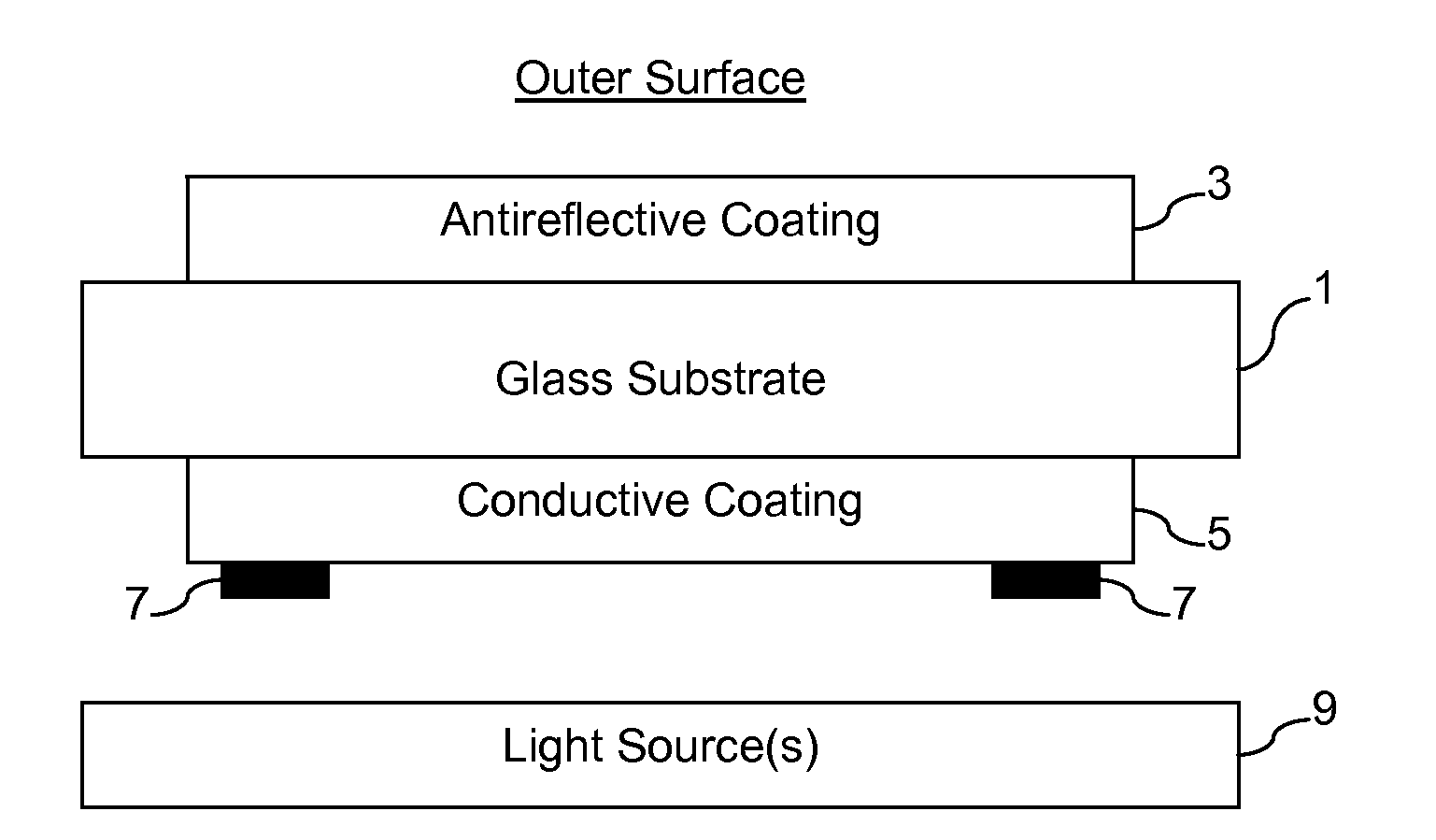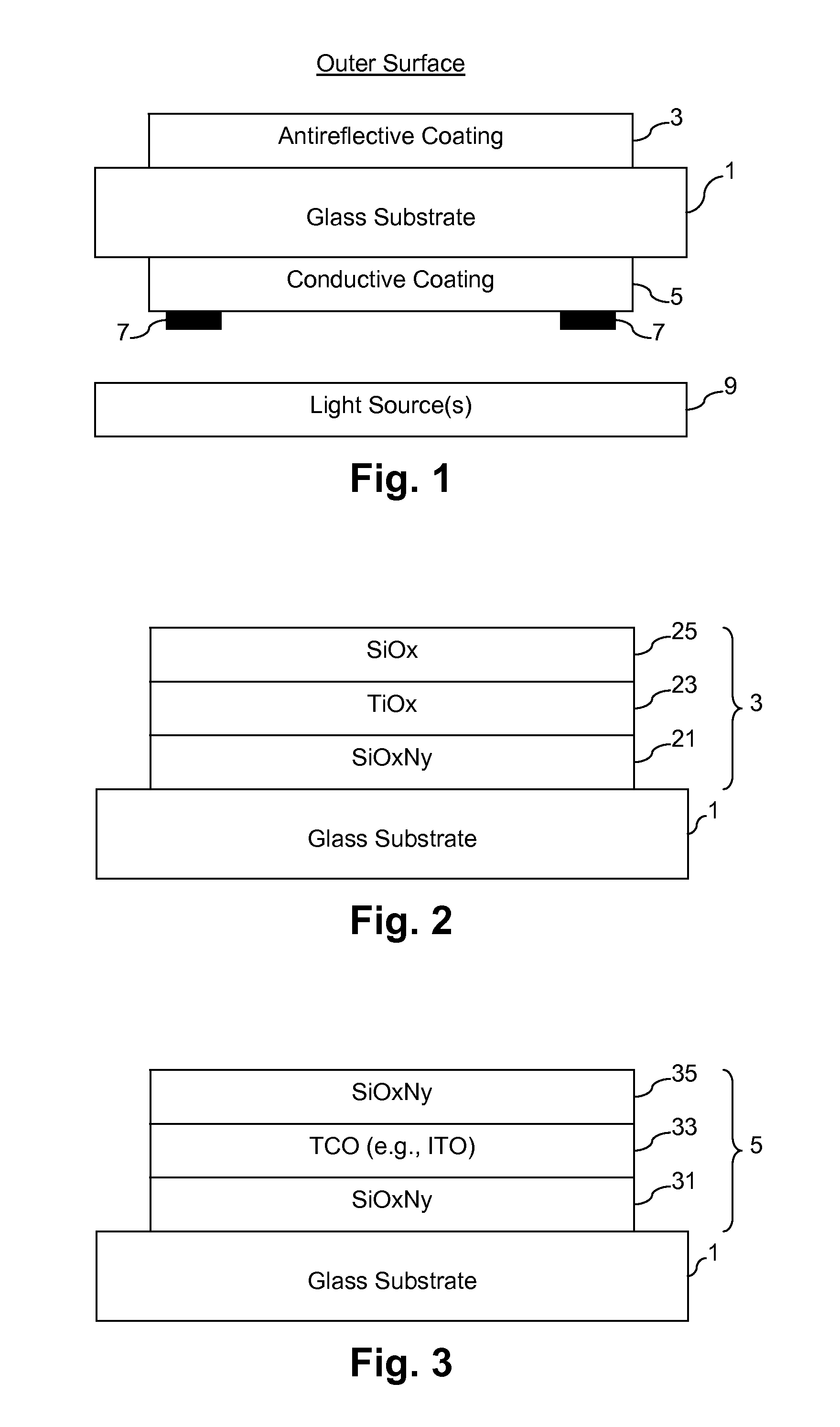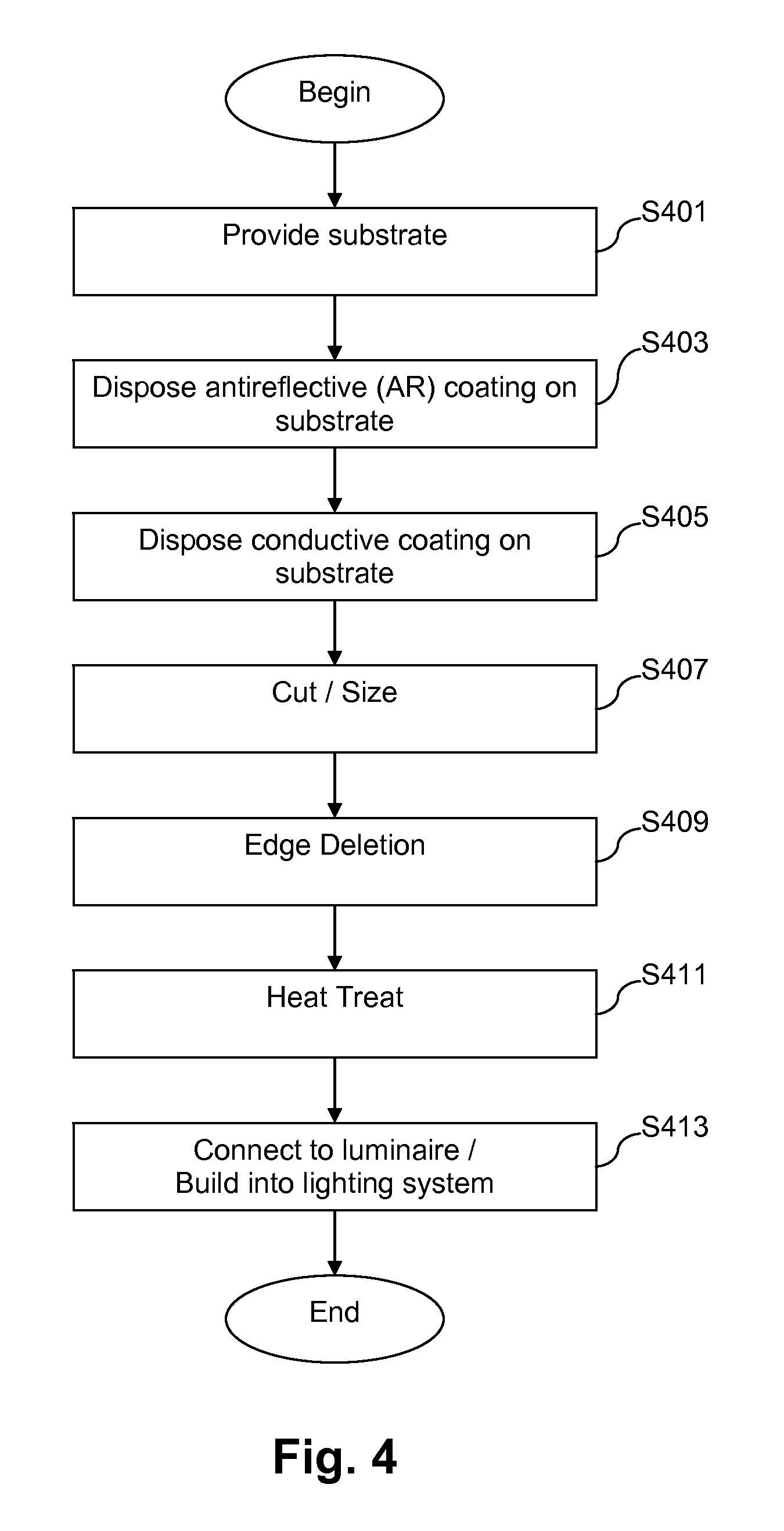Heatable lens for luminaires, and/or methods of making the same
a technology of luminaires and heat sinks, applied in the field of heat sinks for luminaires, can solve the problems of reducing the aesthetic appeal of the lite, difficult for shoppers to quickly and easily pinpoint products, and condensation buildup on automobiles, etc., to achieve rapid and uniform heating, reduce the associated lighting system's light output and efficiency, and high light output efficiency
- Summary
- Abstract
- Description
- Claims
- Application Information
AI Technical Summary
Benefits of technology
Problems solved by technology
Method used
Image
Examples
Embodiment Construction
[0022]Certain example embodiments of this invention relate to heatable glass substrates that may be used in connection with lighting applications, and / or methods of making the same. In certain example embodiments, a glass substrate supports an antireflective (AR) coating on a first major surface thereof, and supports a conductive coating on a second major surface thereof, the first and second major surfaces being opposite one another. Bus bars connect the conductive coating to a power source in certain example embodiments. The substrate may be thermally tempered, e.g., with one or both coatings thereon. In other words, the antireflective coating and / or the conductive coating may survive thermal tempering processes.
[0023]Referring now more particularly to the accompanying drawings in which like reference numerals indicate like parts in the several views, FIG. 1 is a cross-sectional view of an example heatable substrate in accordance with certain example embodiments. As shown in FIG. ...
PUM
| Property | Measurement | Unit |
|---|---|---|
| thickness | aaaaa | aaaaa |
| sheet resistance | aaaaa | aaaaa |
| thicknesses | aaaaa | aaaaa |
Abstract
Description
Claims
Application Information
 Login to View More
Login to View More - R&D
- Intellectual Property
- Life Sciences
- Materials
- Tech Scout
- Unparalleled Data Quality
- Higher Quality Content
- 60% Fewer Hallucinations
Browse by: Latest US Patents, China's latest patents, Technical Efficacy Thesaurus, Application Domain, Technology Topic, Popular Technical Reports.
© 2025 PatSnap. All rights reserved.Legal|Privacy policy|Modern Slavery Act Transparency Statement|Sitemap|About US| Contact US: help@patsnap.com



